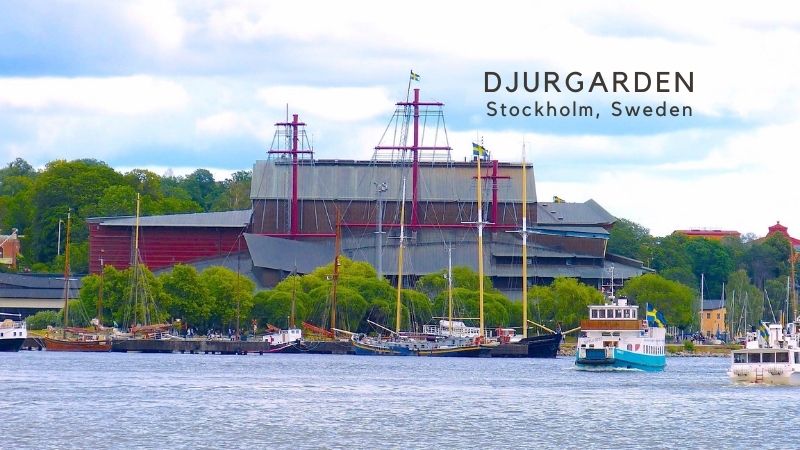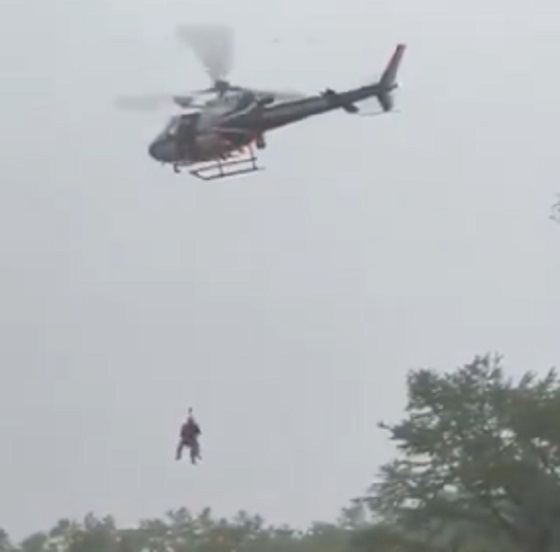Alberta
My European Favourites – Stockholm – Djurgården

If there was one city in northern Europe that I could easily live in, I think it would be Stockholm.
The Swedish capital has over two million inhabitants and over 50 bridges connecting its fourteen islands. The city often ranks highly on the global “quality of life index” and has over one hundred museums, plus a lively culinary, theatre, music and sports scene.

Gamla Stan’s Stortorget Square, narrow streets and the Royal Palace.
If you enjoy boating, sailing and watersports, Stockholm has Lake Mälaren with more than 1,000 islands to the west. To the east of the city centre, the Saltsjön (Salt Bay) has a lengthy and picturesque archipelago with over 30,000 islands leading all the way to the Baltic Sea. With so many cottages and activities on these islands, they are a perfect getaway from the city hustle and bustle.
Stockholm’s old city centre is on the island of Gamla Stan. The area is full of colorful houses from the 17th and 18th centuries and narrow cobblestoned streets with interesting shops, cafes, pubs and bars. The Royal Palace, official residence of the Swedish monarch, can be toured and the popular changing of the guard is accompanied by a military band in the summer months.

Stockholm aerial view, Stockholm’s city hall and Swedish crown on Skeppsholmsbron Bridge.
Royal Djurgården
Stockholmers enjoy a vast green space right in their city center on the island of Djurgården. The island is Scandinavia’s number one tourist attraction and a favourite for nature lovers, walkers, runners, hikers and cyclists. In addition to being loved for its green spaces, it is famous for having four royal palaces, popular museums, cafes, restaurants and a large amusement park.
The history of Royal Djurgården goes back to 1452 when King Karl Knutsson purchased the southern part of the island. It was a royal hunting ground for many years and over time was opened to the public and expanded.
In 1995, King Carl Gustaf XVI officially opened the world’s first national city park comprising the Ulriksdal, Haga, Brunnsviken and Djurgården districts. The 27 square kilometer park is eight times the size of New York’s Central Park.
On Djurgården, you can see over one hundred bird species and eight hundred varieties of flowering plants. You can easily spend a few days in Stockholm just visiting Djurgården. Here are my favourite things to do on the island.

Djurgården Visitor Center and rental shop on the left from the Djurgårdsbron bridge.
When you enter Djurgården from the west on the Djurgårdsbron bridge, you will find the Royal Djurgården Visitor Center. The center rents bikes to explore the island, and there is a ten to twelve kilometer path that goes around the island. They also have kayaks, canoes or pedal boats. If you want to paddle all the way around the island, expect it to take about two to three hours.
The Sjöcaféet café is located by the visitor’s center and has a nice outdoor terrace overlooking the water. They have a reasonably priced menu with a variety of Swedish dishes plus they make a nice pizza. If you want a quick bite you may want to try the Korv sausage stand for a hot dog or their ice cream stand.

The bow of the Vasa ship at the museum entrance, the ship’s starboard side and a model.
Vasa Museum
From the visitors’ center, the Vasa ship museum is easy to spot. It’s located right behind the imposing Nordiska Museum and the roof of the museum has a copper roof with ship’s masts coming through it. The masts depict the actual height of the Vasa when it was in the harbour over 300 years ago.
King Gustavus Adolphus ordered the massive warship built in 1626 during a wartime period against Poland-Lithuania. To match the kings’ prestige, power and ambitions, the ship was extravagantly decorated and armed with 64 cannons on two gundecks. The immense Vasa must have been a stunning sight with all the bronze cannons, ornate carvings, painted sculptures, large masts, sails set and flags flying. The problem, which was discovered during construction, was that she was unstable and top heavy.
Despite this knowledge, on the afternoon of August 10, 1628, the Vasa set sail from the quay in the Old Town. She sailed a few hundred meters, then a squall, or sudden gust of wind, forced the Vasa to list heavily to one side, but she returned upright. Moments later, a second squall listed the boat so heavily that water started to pour in through the gunports. As the water seeped into the ship, it was too much to recover from; the Vasa capsized and sunk. About 30 of the crew and passengers drowned in the incident. The sinking of the Vasa in Stockholm’s harbour on her maiden voyage must have been quite shocking for the thousands of spectators who lined the sea front for a glimpse of the new ship.

A cross section of the Vasa interior, a bronze cannon and colorful figures from the stern.
Shortly after it sunk, efforts were made to retrieve the valuable bronze cannons, and over 50 were recovered. As the years passed, a few unsuccessful salvage attempts were made but eventually the exact location of the wreck was lost. Amateur archaeologist Andres Franzen, after many years of searching, found it again in 1956. Plans were made and the Vasa was finally raised to the surface in 1961 after laying in the “Salt Sea” for 333 years.
For over 20 years, the ship was housed in a temporary structure while it underwent examination and treatment to preserve it. In the early 1980’s, the Swedish government decided to build a permanent museum and numerous architects submitted designs. A final design was chosen, and the Vasa Museum opened in 1990, displaying the almost intact 17th century warship. It is the most visited museum in Scandinavia with around 1.5 million visitors per year.
When you walk in to the museum, the sight of the ship is overwhelming. The ship can be seen from six different levels and there are exhibits, maps and models explaining how the ship was built, it’s sailing route and eventual sinking. The museum explains the situation in Sweden during the 17th century that required the Vasa ship to be built, and has a movie theatre with a film on the ship recovery.
The Vasa museum is an absolute must if you are in Stockholm for any length of time.

The Renaissance Nordiska Museum, the central hall and the statue of King Gustav Vasa.
Nordiska Museum
As you emerge from the Vasa Museum, you will face the back of an impressive stone building, the Nordiska Museum. It stands on an area called Lejonslätten, the lions plain, because Queen Kristina, daughter of King Gustavus who had the Vasa ship built, placed lions here during her reign in the 17th century. The Renaissance style building which was partially built for Stockholm’s World´s Expo in 1897 is the home of Sweden’s largest cultural and historical museum.

Elaborate furniture, a 13th century baptismal font, toy cars and a warrior’s iron breastplate.
The Nordiska museum was founded in 1873 by Artur Hazelius, who also founded the nearby Skansen open air museum. When you enter the museum, you will see a large oak statue of King Gustav Vasa placed in the centre of an over 100 meter long open central hall with a ceiling that rises 24 meters. As you look up, you will see multiple stories surrounding the central hall.
The museum has over a million objects depicting the Nordic lifestyle and traditions from the 16th century to today. The collections of art, furniture, jewelry, fashion, glass, porcelain and interiors are interesting. The museum also has an area dedicated to the Sami, the only indigenous people in Sweden.

Wax figures of ABBA, caricature dolls of the iconic group and a display of records and CDs.
ABBA Museum
If you follow the main road in front of the Nordiska Museum, the Djurgårdsvågen, for about 300 meters, you will reach the entrance to the ABBA Museum. The Swedish pop group is known the world over, and their band’s name is an acronym taken from the first letters in the band members first names, Agnetha Fältskog, Björn Ulvaeus, Benny Andersson, and Anni-Frid Lyngstad. They rose to fame in 1974 after winning the annual Eurovision Song Contest with the hit song ‘Waterloo.”
ABBA sold hundreds of millions of records worldwide during the 1970s and 1980s and were inducted into the Rock and Roll Hall of Fame in 2010. In 1999, the musical “Mama Mia!,” which adapted ABBA’s music, became a smash hit along with subsequent related films.
The ABBA Museum opened in 2013 and at the entrance you will get an audio tour device that is easy to use on the self guided tour. As you go through the museum, you just tap the audio pad, and the audio begins. Much of the audio is actually the band members telling stories of their lives before ABBA, how they met, how they wrote songs, how they became the iconic super group and some of the experiences they had along the way. There are interactive areas where you can sing their music or dance with them on stage.
The exhibits are well done including a recreation of the Polar Studio, where they recorded some of their music. There is a helicopter similar to the one used in the album cover ABBA ARRIVAL that you can sit in to recreate the photo. In the museum you will see gold records, archival film footage, interesting stage costumes and the caricature style ABBA dolls that were used in a music video called “The Last Video.”
Before you leave, you enter the giftshop where you can get everything ABBA from souvenirs to posters, apparel and CDs. We all have listened or danced to ABBA songs over the years, and although I’m not a huge fan, the museum was very enjoyable.

Grona Lund from the water, the carousel, the Eclipse swings and the roller coasters.
Grona Lund
When you leave the ABBA Museum, you can’t miss the sounds of the nearby Amusement Park.
In the late 1880s, on the south shore of Djurgården, nine acres were approved for the building of an amusement park. The park’s design had to incorporate the existing houses and commercial buildings that were already on the property. Even though the park has a small footprint on the island, it has 30 different attractions including roller coasters, free fall rides, and the “Eclipse,” one of the world’s tallest swing rides. The “Insane” roller coaster lives up to its name as the cars flip and spin and you travel along. In addition to the rides for the thrill seekers, there are rides for young children, and carnival games where you can win prizes like huge chocolate bars.
Grona Lund often hosts rock and pop music concerts, including on the main stage in the middle of the park. Bob Marley performed at Grona Lund three times, including in 1980 when he drew 30,000 fans.
If you want a quick bite, there are about fifteen food stands offering a wide selection of items including candy, burgers, pizza, poke bowls, kebabs, gyros, churros, waffles, crepes and ice cream. If you prefer to sit and relax, there are over ten options including Mexican, BBQ and Asian restaurants and a Biergarten. Needless to say, you won’t go hungry here.
The park is open from spring to late September and may be open during other dates including Halloween and the Swedish Autumn break. You can buy your tickets online in advance and get a pass that includes unlimited rides.
We have taken many youth hockey and ringette teams to Stockholm, and Grona Lund is always a hit with the kids and parents.

A traditional house in Skansen, a glass blowing shop, farm buildings and a school room.
Skansen
If you are not into amusement parks, across the street from the Grona Lund is the slower paced Skansen open-air museum. In the late 1890s, the park was created to preserve traditions, customs and structures from different parts of Sweden prior to the industrial age. The park is much larger that Grona Lund, with over 75 acres, and it attracts over a million visitors per year.
Over 150 buildings were relocated to Skansen from throughout Sweden, and they range from simple farm structures to worskhops, school rooms and manor houses. As you walk through the small village that they have created, people in traditional dress are doing every day chores. If you enter the trade shops, you will see skilled craftsmen demonstrating their skills including bakers, tanners, silversmiths, shoemakers and glass blowers. In today’s world, we take many essential products for granted that used to be made by hand in these small community work shops. To experience 19th century transportation, a 200 meter long funicular railway has been transporting people 35 meters up the north side of the Skansen hill since 1897.
Skansen’s traditional Christmas market, festivals and folklore shows are very popular.
Skansen’s relocated farms include domesticated animals like goats, pigs and horses. The park zoo contains over 75 species of the Nordic animals including bison, bears, seals, otters and moose. In addition to these Scandinavian natives, the zoo also features non-traditional animals like monkeys, peacocks, elephants and more.
Like Grona Lund, there are numerous options for fast food, cafes and restaurants. Taking time for a “fika” is an important Swedish custom. A fika is an opportunity to take time to share a coffee, and a little bite or a pastry, usually a cinnamon bun, with friends, colleagues or family.
A walk around the Skansen open-air museum on a nice sunny day is a great family activity.

Traditional farm houses, the funicular railway, the Bredablick tower and a moose.
More things to see and do in Djurgården
There are so many things to do in Djurgården. I listed some of my favourites, but you may enjoy visiting some of these options depending on your interests.
The Viking Museum opened in 2017 and it includes the interesting Ragnfrid’s Saga Viking ride.
The Liljevalchs Konsthall is an art gallery and exhibition space opened in 1916.
The Prince Eugen’s Waldemarsudde art museum is situated on a beautiful waterfront estate with a castle like mansion.
The Spritmuseum & The Absolut Art Collection is devoted to alcohol including Scandinavian Aquavit. After touring the museum, you can order a tasting tray of traditional spirits, Absolut vodkas or ciders.
Featuring 20th century Scandinavian and French art, the Thiel Gallery was established in 1905.
Junibacken is a children’s centre inspired by the stories by the Swedish writer Astrid Lindgren.
Cirkus is a 1,650 person arena built in 1892 that used to hold the circus, but now it is mainly used for shows, concerts, performances, trade shows, meetings, parties and gala dinners.
On the north east of the island, you will find the Djurgården canal. The area across from the canal is Djurgårdsbrunn. Here you will find the Museum of Technology, the Police Museum, the Maritime Museum and more park space.
With so many activities and green space, you can see why Stockholmers love Djurgården. On you next trip to Sweden, be sure to set aside some time on your schedule to explore and enjoy it.
Explore Europe With Us
Azorcan Global Sport, School and Sightseeing Tours have taken thousands to Europe on their custom group tours since 1994. Visit azorcan.net to see all our custom tour possibilities for your group of 26 or more. Individuals can join our “open” signature sport, sightseeing and sport fan tours including our popular Canada hockey fan tours to the World Juniors. At azorcan.net/media you can read our newsletters and listen to our podcasts.
Images compliments of Paul Almeida and Azorcan Tours.
Read more of Paul’s travel series – click here.
Alberta
Alberta school boards required to meet new standards for school library materials with regard to sexual content

Alberta’s government has introduced new standards to ensure school library materials are age-appropriate.
School libraries should be safe and supportive places where students can learn and explore without being exposed to inappropriate sexual content. However, in the absence of a consistent standard for selecting age-appropriate library materials, school boards have taken different approaches, leading to concerns about safeguards in place.
In response to these concerns, and informed by feedback from education partners and the public, Alberta’s government has created standards to provide school boards with clear direction on the selection, availability and access to school library materials, such as books.
“Our actions to ensure that materials in school libraries don’t expose children to sexual content were never about banning books. These new standards are to ensure that school boards have clear guidance to ensure age-appropriate access to school library materials, while reflecting the values and priorities of Albertans.”
The new standards set clear expectations for school library materials with regard to sexual content and require school boards to implement policies to support these standards.
Standards for school library materials
Under the new standards, school libraries are not permitted to include library materials containing explicit sexual content. Non-explicit sexual content may be accessible to students in Grade 10 and above, provided it is age-appropriate.
“Protecting kids from explicit content is common sense. LGBTQ youth, like all children, deserve to see themselves in stories that are age-appropriate, supportive and affirming – not in material that sexualizes or confuses them.”
School boards must also regularly review their school library collections, publish a full list of available materials and ensure that a staff member supervises students’ access to school library materials. School boards will have to remove any materials with explicit sexual content from their school libraries by October 1.
School board policies and procedures
All school boards must have publicly available policies that align with the new standards for selecting and managing library materials by January 1, 2026. School boards can either create new policies or update existing ones to meet these requirements.
These policies must outline how school library materials are selected and reviewed, how staff supervise students’ access throughout the school day, and how a student, parent, school board employee or other member of the school community can request a review or removal of materials in the school library. School boards are also required to clearly communicate these policies to employees, students and parents before January 2026.
“A robust, grade- and age-appropriate library catalogue is vital for student success. We welcome the ministry’s initiative to establish consistent standards and appreciate the ongoing consultation to help craft a plan that will serve our families and communities well.”
“Red Deer Public Schools welcomes the new provincial standards for school library materials. Our division is committed to maintaining welcoming, respectful learning spaces where students can grow and thrive. Under the new standards for school libraries, we remain dedicated to providing learning resources that reflect our values and support student success.”
Quick facts
- The new standards will apply to public, separate, francophone, charter and independent schools.
- The ministerial order does not apply to municipal libraries located within schools or materials selected for use by teachers as learning and teaching resources.
- From May 26 to June 6, almost 80,000 people completed an online survey to provide feedback on the creation of consistent standards to ensure the age-appropriateness of materials available to students in school libraries.
Related information
- Ministerial Order
- School library standards engagement
- Reference Materials: Content warning: this document contains graphic content that may be disturbing to viewers and is not appropriate for young viewers. Viewer discretion is advised.
Alberta
Fourteen regional advisory councils will shape health care planning and delivery in Alberta

Regional health councils give Albertans a voice
Albertans want a health care system that reflects where they live and adapts to the unique needs of their communities. As part of the province’s health care refocus, Alberta’s government committed to strengthening community voices by providing more opportunities for Albertans to bring forward their local priorities and offer input on how to improve the system.
The regional advisory councils, made up of 150 members from 71 communities, will advise Alberta’s four health ministries and the newly refocused health agencies: Primary Care Alberta, Acute Care Alberta, Assisted Living Alberta and Recovery Alberta. Each council will explore solutions to local challenges and identify opportunities for the health system to better support community decision-making.
“By hearing first-hand community feedback directly, we can build a system that is more responsive, more inclusive and ultimately more effective for everyone. I am looking forward to hearing the councils’ insights, perspectives and solutions to improve health care in all corners of our province.”
“Regional advisory councils will strengthen acute care by giving communities a direct voice. Their insights will help us address local needs, improve patient outcomes and ensure timely access to hospital services.”
“A ‘one-size-fits-all’ approach does not address unique regional needs when it comes to mental health and addiction challenges. These councils will help us hear directly from communities, allowing us to tailor supports and services to meet the needs of Albertans where they are.”
“Every community has unique needs, especially when it comes to seniors and vulnerable populations. These regional advisory councils will help us better understand those needs and ensure that assisted living services are shaped by the people who rely on them.”
Members include Albertans from all walks of life, health care workers, community leaders, Indigenous and municipal representatives, and others with a strong tie to their region. About one-third of members work in health care, and more than half of the council chairs are health professionals. Almost one-quarter are elected municipal officials, including 10 serving as chairs or vice-chairs. Ten councils also include a representative from a local health foundation.
Council members will share local and regional perspectives on health care services, planning and priorities to help ensure decisions reflect the realities of their communities. By engaging with residents, providers and organizations, they will gather feedback, identify challenges and bring forward ideas that may not otherwise reach government.
Through collaboration and community-informed solutions, members will help make the health system more responsive, accessible and better able to meet the needs of Albertans across the province.
“As Primary Care Alberta works to improve access to primary health care services and programs across Alberta, we are grateful to have the opportunity to tap into a dedicated group of community leaders and representatives. These people know their communities and local needs, and we look forward to learning from their experiences and knowledge as we shape the future of primary care in Alberta.”
“The regional advisory councils will help to bring forward the voices of patients, families and front-line providers from every corner of Alberta. Their insights will help us plan smarter and deliver care that’s timely, effective and truly local. We look forward to working closely with them to strengthen hospital and surgical services across the province.”
“Nobody understands the health care challenges unique to a community better than the people who live there. The regional health advisory councils are made up of those living and working on the front lines across the province, ensuring we are getting the perspective of Albertans most affected by our health care system.”
“Alongside Recovery Alberta’s staff and physician team, these regional advisory councils will build upon the high standard of mental health, addiction and correctional health services delivered in Alberta.”
Indigenous Advisory Council
Alberta’s government continues to work directly with Indigenous leaders across the province to establish the Indigenous Advisory Council to strengthen health care services for First Nation, Métis and Inuit communities.
With up to 22 members, including Indigenous health care workers, community leaders and individuals receiving health care services, the council will represent diverse perspectives across Alberta. Members will provide community perspectives about clinical service planning, capital projects, workforce development and cultural integration in health care.
Related information
-

 Alberta2 days ago
Alberta2 days agoAlberta school boards required to meet new standards for school library materials with regard to sexual content
-

 Business2 days ago
Business2 days agoCarney government should recognize that private sector drives Canada’s economy
-

 Environment1 day ago
Environment1 day agoEPA releases report on chemtrails, climate manipulation
-

 Bruce Dowbiggin2 days ago
Bruce Dowbiggin2 days agoThe Covid 19 Disaster: When Do We Get The Apologies?
-

 Alberta2 days ago
Alberta2 days agoFourteen regional advisory councils will shape health care planning and delivery in Alberta
-

 Crime1 day ago
Crime1 day agoSweeping Boston Indictment Points to Vast Chinese Narco-Smuggling and Illegal Alien Labor Plot via Mexican Border
-

 Business20 hours ago
Business20 hours agoCBC six-figure salaries soar
-

 Business2 days ago
Business2 days agoCannabis Legalization Is Starting to Look Like a Really Dumb Idea








